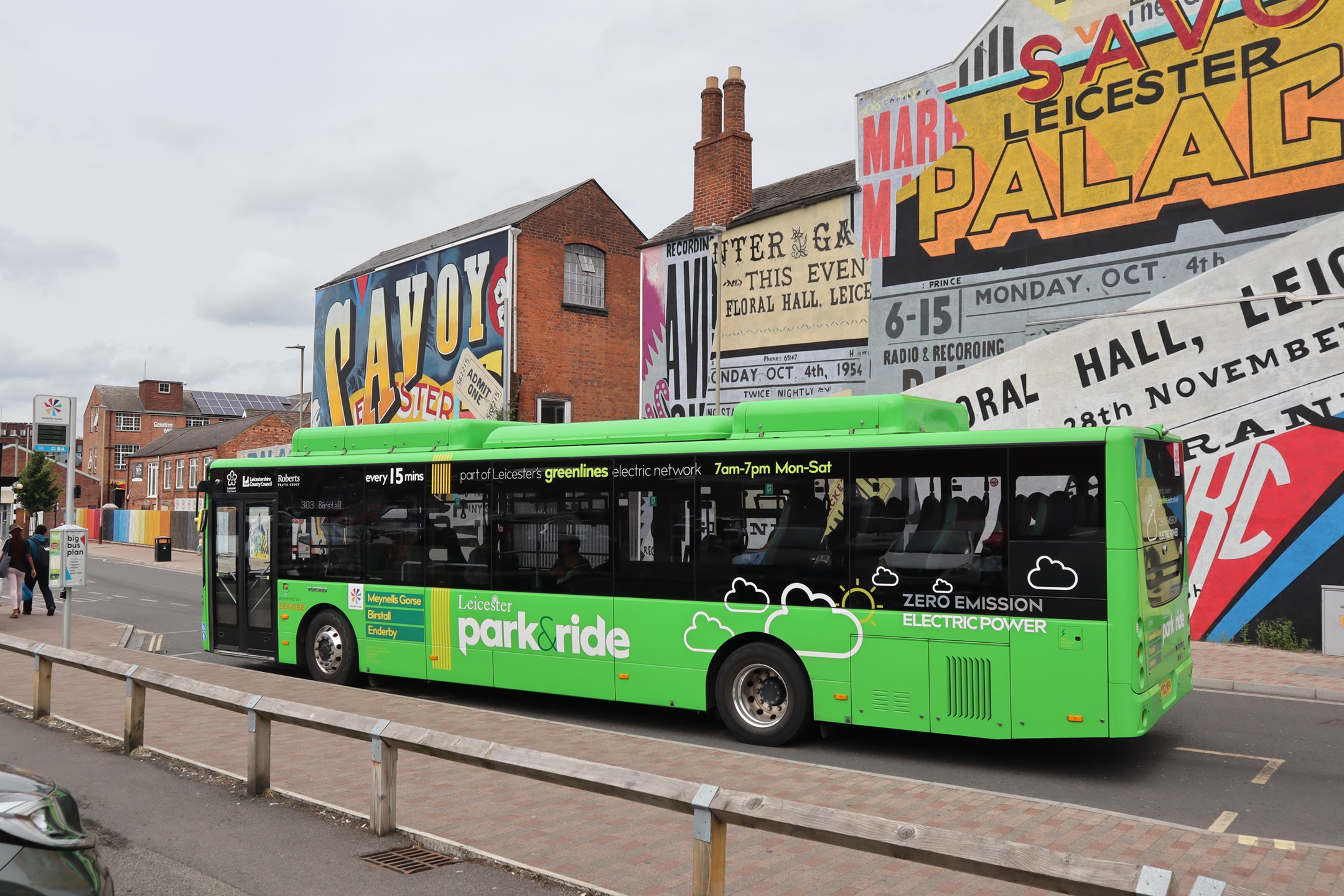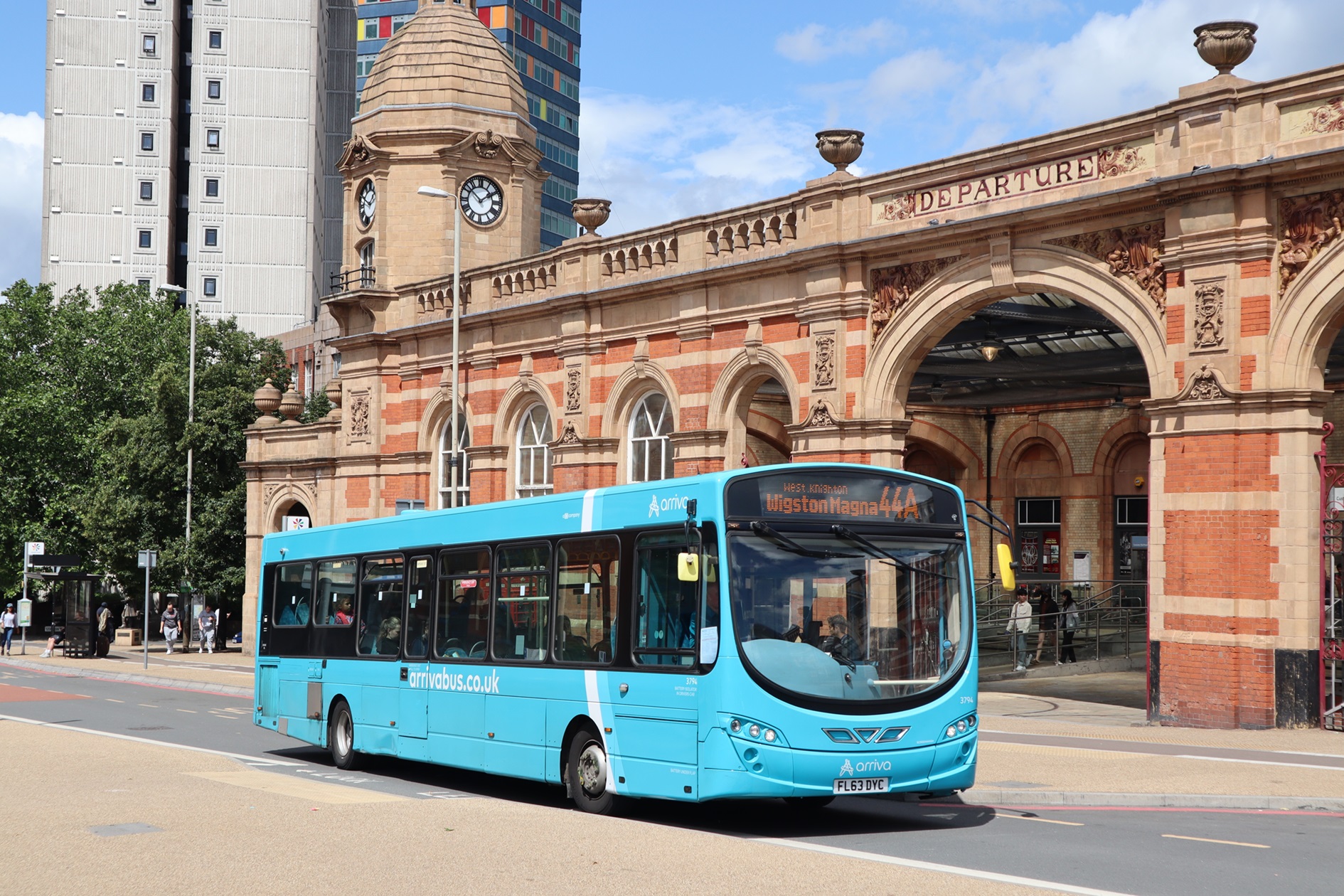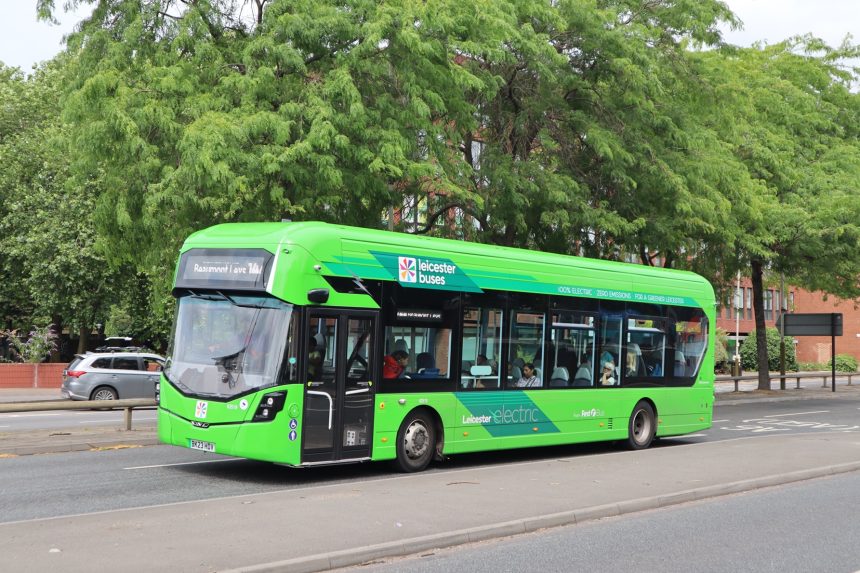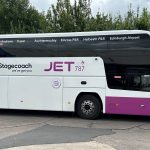Scope for strong bus partnership to rapidly deliver service improvements, patronage growth and fleet decarbonisation has again been illustrated by the Leicester Buses Partnership. In little more than two years, the arrangement between Leicester City Council and seven bus operators has delivered 94 of 100 commitments
Among achievements are deployment of 134 battery-electric buses to give a city network that is 50% zero-emission; 25% patronage increase on orbital service provision; and a free city centre service that carried 500,000 passengers in its first year. Priority and stop infrastructure, network optimisation and a common brand are other fruits of the partnership, and more are in hand.
Buses in Leicester have a feel-good factor, one operator notes. But City Mayor Sir Peter Soulsby cautions areas seeking to replicate Leicester’s successes that constructive partnership is no easy task and requires commitment, investment and a long-term approach from all involved.
He was speaking in July at an event celebrating partnership work so far. The battery-electric shift leans on Transforming Cities Fund and Zero Emission Bus Regional Areas (ZEBRA) support, and it captures operators large and small. While it has thus far focused on more straightforward applications, there is now what Sir Peter says is “a determination” for the other half of the fleet to follow by 2030.
Patronage also forms part of the 2030 target. What the City Council describes as a “diverse and comprehensive” partnership delivered a 14.1% uplift from 2022/23 to 2023/24, leaving the total at 97.1% of pre-pandemic levels. A full return to that prior level of ridership is targeted for 2025, and further growth of 10% by 2030.

Political will clear throughout Leicester Buses Partnership work
As a Labour politician, words from Sir Peter about a deep-seated approach to partnership scarcely toe the party line. Secretary of State for Transport Louise Haigh and other senior Labour figures at regional level bang the franchising drum loudly. Sir Peter’s comments, and successes in Leicester, illustrate that not everywhere in England will the appetite be for reregulation, despite what some in government advocate.
“Promoting public transport can be controversial, but it is remarkable what has been achieved. In Leicester there has not always been an environment and atmosphere of collaboration, but coming together and sharing investment and vision has worked well,” he continues.
Achieving the 2030 aspiration for zero-emission is part of what Sir Peter acknowledges is an ambitious strategy by the partnership. That also includes work on network development, ticketing, reliability, and park-and-ride, and is formalised in a Bus Service Improvement Plan (BSIP) for 2025-30.
The city’s two biggest operators – Arriva and First Bus – followed Roberts Travel Group and Centrebus in rolling out battery-electric vehicles. Both of those large groups acknowledge that a robust partnership between public and private sectors is key to generating improvements.
Arriva: Patronage growth gives operator confidence to invest
Arriva Head of Commercial – East and South Midlands Toby France says patronage growth in Leicester “gives confidence to invest,” although he adds that Arriva’s more interurban network centred on the city poses a challenge for decarbonisation.
Arriva recently placed 24 Wrightbus StreetDeck Electroliner double-deckers into service. Like a large fleet of battery-electrics with First Leicester, support was received from the first round of ZEBRA. Arriva will take more battery-electrics thanks to a successful Leicestershire County Council bid to ZEBRA 2, with infrastructure groundwork at Thurmaston depot for the second tranche of buses having been part of the initial project.

Mr France adds his weight to Sir Peter’s stance that agile partnership has delivered more, and more rapidly, than had franchising been in play. “There is a strength of character among local leaders, and they are keen to work with operators,” says Mr France. “They have put their money where their mouths are in terms of improving stops and priority measures.”
Equally importantly, Leicester City Council “recognises that the bus is a means to cut congestion and deliver wider social benefits – such as to mental health and the night-time economy,” he continues.
Leicester ‘loud and proud’ about buses and partnership
For First Bus, its Leicester operation is “the jewel in the crown,” says Managing Director Manchester, Midlands and South Yorkshire Zoe Hands. Success in Leicester is thanks to what she describes as the city’s “pragmatic” political leadership and the attitude of City Council transport officers. Other areas “could learn a lot from Leicester,” she adds.
Prominence, positivity and improvements for bus also bring further benefit to an operator, Ms Hands continues. “Buses are being talked up in Leicester, and that has made a difference to our staff’s attitude. Leicester has the most engaged workforce across First Bus.”
Patronage growth for First Bus in the city leans heavily on investment via the partnership, but “feel-good” around the mode is a contributor. “Leicester is loud and proud about its bus network,” she says, noting that in August First Bus will add a significant number of service hours to its commercial timetables there.
Further central government backing is required to continue the good work already done in Leicester. First Bus in the city has largely completed the transition to battery-electric, but Arriva and some other operators still have work to do. Non-vehicle-based improvements outlined in the latest BSIP will need additional support.
Sir Peter notes that “constant revenue funding” is thus sought to deliver the next phase of the Leicester Buses Partnership. The city shows how the government must realise that franchising is not the panacea ministers think it is – and moreover, that some areas will not want it, regardless of how it is sold to them.



























